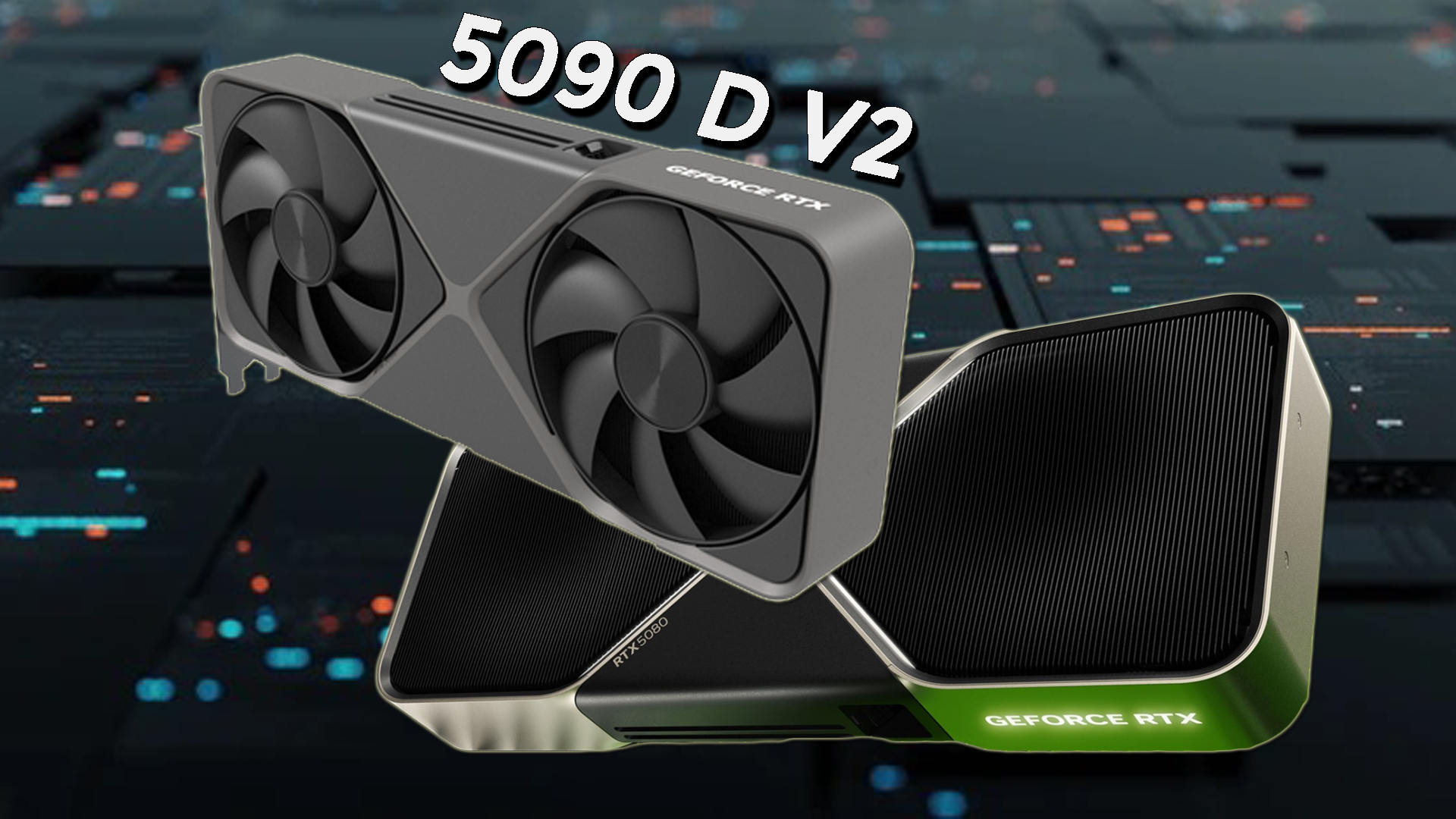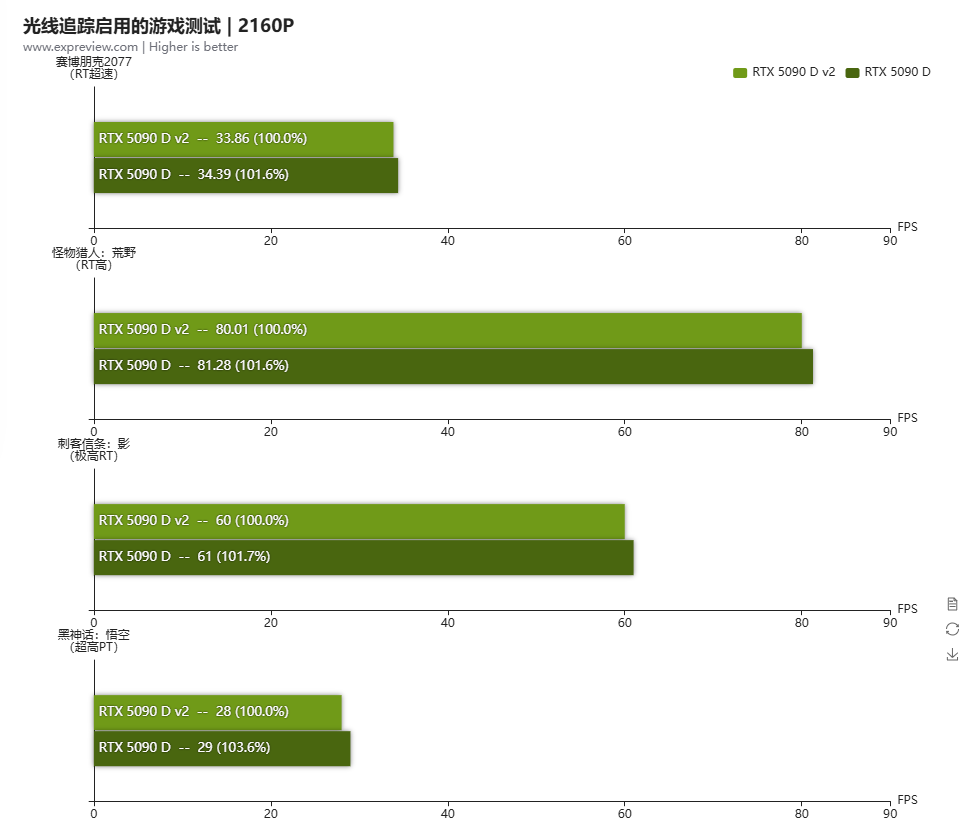NVIDIA’s China-exclusive GeForce RTX 5090 D V2 has officially launched, and early benchmarks show it’s nearly identical to the RTX 5090 D in gaming – but takes a noticeable hit in productivity and AI workloads. 
According to tests from Expreview, the card’s reduced VRAM configuration (24 GB vs
. the original’s 32 GB) doesn’t hinder 4K gaming performance, with most titles showing only a 1–2% drop, if any.
That’s because modern games rarely need more than 24 GB, even at maxed-out settings. Synthetic benchmarks like 3DMark Fire Strike, Time Spy, Port Royal, Speed Way, and Steel Nomad also report almost no difference between the V2 and the original D variant.
However, the story changes in professional workloads. In Blender, the V2 lagged behind by up to 19% in the Junkshop scene, 10.5% in Monster, and 15.9% in Classroom. V-Ray results were also lower – around 7.5% slower in CUDA rendering and up to 24.8% slower in the RTX test. AI workloads told a similar story, with UL Procyon tests showing up to 10% slower performance on LLAMA 3.1 and LLAMA 2 tasks.
While the V2 is listed close to the 5090 D in some markets, its official MSRP of 16,499 Yuan (~US$2,295) makes it $500–$550 cheaper than the average street price of the original D. That still makes it a capable high-end gaming card for those who care only about frame rates – but for creators, 3D artists, and AI researchers, the reduced VRAM could be a dealbreaker.
In short: if you’re gaming at 4K, the V2 will keep up. If you’re rendering complex scenes or training AI models, the original RTX 5090 D still reigns supreme.